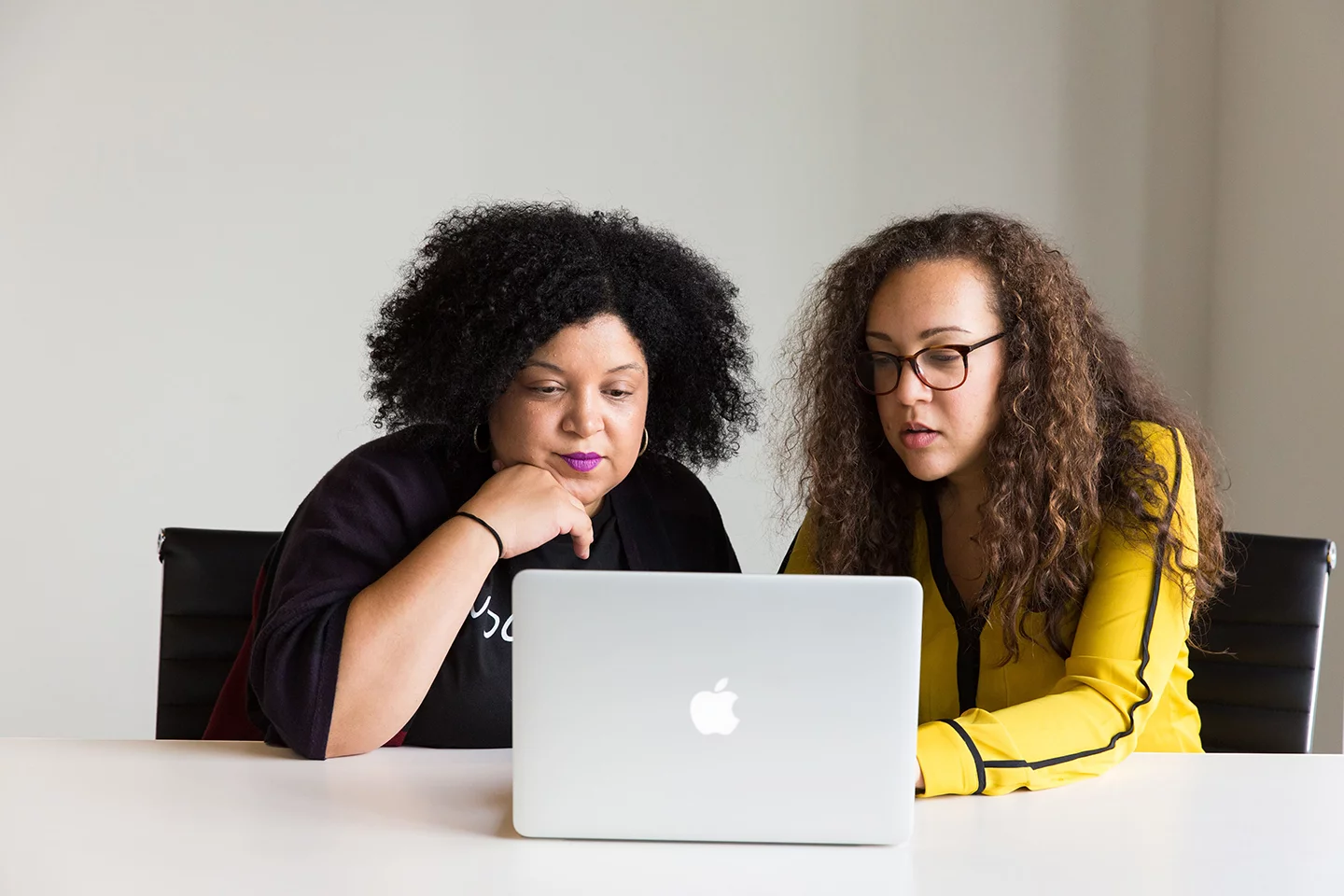We recently continued our Future of Work Roundtable series with a session from Hannah Rose Olson, the founder of Chronically Capable, the first web application specifically designed to address employee disabilities and connect the chronically ill and disabled to flexible, remote work opportunities. What follows is an excerpt from Olson’s presentation.
To experience Mursion’s virtual reality simulations and see for yourself how this platform can support your own business to learn how VR can play a role in honing the interpersonal skills needed to foster a culture of coaching, schedule a demo today.
“I think this really starts with knowing how many of your employees actually live with a disability. I usually shock people with these statistics.
More than 1.3 billion people are currently living with a disability globally, that’s about 30% of our population. What’s most shocking to me which, is a stat I actually learned just in the past few months, is that 30% of our white-collar college-educated employees have a disability. Seventy percent of these disabilities are invisible, meaning that most of these disabilities are things that you may not see when you’re first interacting with an individual. Not to mention that more than 60% of our population here in the United States is currently living with a chronic illness. These are things like autoimmune disorders, celiac disease, IBS, lupus, and just this past week, I’m sure many of us saw that they are now considering many of the lingering effects from COVID-19 to be considered a chronic illness. This number is just set to rise.
More than 1.3 billion people are currently living with a disability globally, that’s about 30% of our population.
Among these white-collar college-educated employees, 30%, as I mentioned, have a disability, but only 3.2% of people are actually disclosing this disability to their employers, which means that almost a quarter of your staff may have a disability that you do not know about.
This is something that we’ve been coining internally at my organization as a disclosure gap, a huge difference from the 60% of our population with an illness, 30% with a disability. A lot of this, we’ll get into just the barriers and why people aren’t disclosing, but just to put into perspective that this is almost a quarter of your workforce that you just may not know. I’m actually one of these people. On the outside, I may look like I’m put together and feeling great and feeling healthy, and today, I’m glad to say that I am feeling very healthy. Several years ago I was diagnosed with Chronic Lyme Disease while I was in college in Boston.
After graduation, I actually got a PICC line placed in my arm, which is essentially a permanent IV. I was hooked up to IV antibiotics for about eight hours a day. When I landed my first job out of school, I struggled with how do I tell my future boss about this PICC line? I felt so much fear and shame about this, and I thought I’m going to be judged differently than my peers if I say something. I didn’t disclose the disability prior to accepting my job. Moved down to Washington DC, started this great job, and everything was all put together until I had to go to work and had to have this IV at my desk.
As I mentioned, being hooked up eight hours a day is essentially your working day. I really didn’t have the opportunity to hide this, which I was able to out of the workplace or working remotely. Suddenly, I’m in this office, and I have a PICC line and I, unfortunately, ended up at a company that wasn’t accepting of this. I had a boss that didn’t allow me to actually administer my medication at my desk. At such a young age, at this point, I was 21 years old and having to choose between my health and the work that I was really passionate about, I thought, ‘I can’t be the only one going through this experience.’
I thought, ‘I can’t be the only one going through this experience.’
For a while, I really thought that I was. I felt very alone. I felt very ashamed and ultimately left the job. Back in 2019, I was fortunate enough to take this experience and start Chronically Capable. We started a talent marketplace in community, and we work with folks with chronic illnesses and disabilities to connect them to meaningful employment.
We work with a variety of companies from small startups all the way to large enterprises to really help rethink inclusivity and to think about how we can view people with disabilities or including people with disabilities as an opportunity and not a chore. These people bring core cultural and financial benefits to an organization. We’re trying to reframe the minds of organizations, which a long time, have been thinking about this really as a chore and something we have to do. It’s a checkbox exercise.
How Organizations Benefit from Disclosure of Employee Disabilities
There are several benefits to disclosure, both for employees and for organizations. By disclosing as an employee, you can gain access to accommodations that otherwise may not be available to you. I know for one that if I had disclosed back in the day, maybe I could’ve asked for remote work, or maybe I could have asked to have this PICC line at my desk, but by not disclosing, I didn’t set the stage for myself to then ask for accommodations, and I threw my boss off in a bit. Also, it empowers employees to really live their most authentic life. This is something, work gives people purpose and meaning, two things that we often lose when we’re living with an illness or disability. It’s two things I definitely lost myself.
If I have disclosed this and then welcomed it into an environment that accepted it, I know for a fact that I would have felt that I’m living my true authentic life. Now, today, working in the job that I’m working in where I get to actually talk about my disability every single day, it’s been an incredibly healing experience for me, but also one where I am working at the highest level I’ve worked in my life because I’m empowered to be happy and proud of my disability, which is something I felt so awful about for so many years. Really, by getting more employees to disclose their disabilities can help your organization in a multitude of ways. This can go from recruitment, we see this from retention, retention of staff, we see revenue, and we really do see overall growth of the company.
I’m going to walk through a few of the main benefits of disclosure that we see. I want to note that by no way am I saying that everyone needs to disclose, but I just want to walk through these benefits, and then how we can create that culture where people feel welcome to. Starting off with increased job satisfaction, people who disclose their disabilities, they are more than twice as likely to feel regularly happy at work than those who haven’t disclosed.
The second thing I want to call out is we see better performance from employees. By having accommodations, this can actually help people with disabilities perform at their highest level. You can’t provide accommodations to people who would benefit if you don’t know who they are. Because 70% of these disabilities are invisible, more often than not, we actually don’t even know who these individuals are. By disclosing, it sets the stage for asking for these accommodations.
The third thing I want to call out is we see this increase in energy for innovation. It can be draining for anyone who has to hide a significant part of their identity. We see this a lot with the LGBT community. It’s really exhausting and painful to hide a part of you. When people feel comfortable bringing their whole self to work, their sense of well-being really improves. That culture really leads to this more collaborative and a lot more innovation for an organization.
Then, lastly is meeting compliance goals. I leave this last because I don’t like this to be a motivation. One of the really most basic benefits for employers is compliance. With the ADA came Section 503 of the Rehabilitation Act, which requires companies to reach 7% disability representation in their workforce. To meet this target, companies need to be able to measure disabilities in their workforce. If people aren’t disclosing, companies aren’t meeting this goal.
Right now, the last time I checked, I saw that only 13% of companies in the United States have hit the 7% utilization goal. Companies are way far behind. We already know this. I hate that this is the motivation, but it is something that we should strive for. We should stay compliant just as we should stay compliant for all the other things that we do within an organization.
Then, another great report done in 2018 by Accenture and Disability:IN just talked about how companies who include people with disabilities in their workforce perform significantly better than those who don’t. We saw 28% higher revenue, doubled in income, and 30% higher economic profit margins. Just to clarify that these are companies that were prioritizing disability inclusion, putting in the work, encouraging disclosure, and creating an inclusive work culture, which are all the things that we’re talking about right now. Beyond just these cultural benefits and the benefits of retention and productivity, all things that are super important, there are actual economic benefits from hiring from this population.
Creating More Inclusive Workplaces
How can we create a more inclusive work culture? For some employees, deciding to disclose is a gradual process, and that can be gradual for a long time. It may start with checking a box that says yes on a survey, or it may start with disclosing to a manager and then to certain colleagues. People often base their decision on the workplace culture and how they see other employees with disabilities being treated. It’s really important that we continue to prioritize creating an inclusive work culture that includes those with disabilities.
I often say that when we think about diversity inclusion, it’s a broad spectrum. The last thing we talked about in that definition is always people with disabilities, and they always fall last. That, to me, is such a shame, because just the amount of people living with disability in our country alone, we have to prioritize this and create inclusive work culture that includes those with disabilities, as well.
Walking through a few of these strategies to encourage disclosure, starting off is making employees feel comfortable sharing. Employers, and importantly, managers as well, need to create an environment where employees with disabilities feel safe and safe enough to disclose what they’re going through. That happens when employees trust that their managers won’t treat them differently and that their manager will actually help them make adjustments to better accommodate them.
Second is really to let employees know how they can actually benefit from disclosure. Surveys have been something we’ve seen a lot in the past few years, and these often encourage people to disclose. That answer is going to vary depending on the employee. It’s really important that we highlight what the motivations are from knowing.
Third is really to promote access to accommodations. I’ve talked about this a lot on the employee side. A common reason an employee is going to disclose is to receive accommodations. With the right support, an employee who may have a disability can perform their job at really this optimal level. We need to make sure that we’re explaining the process for requesting accommodations and the timeline for giving a response.
With the right support, an employee who may have a disability can perform their job at really this optimal level.
Then, lastly is communicating your company’s focus on inclusion. This can look like working with your ERG to highlight different initiatives you’re doing, but really making sure that you’re explaining to those who may be currently in your workplace or future employees that your company is committed to inclusion. If we’re not talking about it, people don’t know. A few more is really to broadcast and share these success stories. By putting a public face on disabilities, it really often encourages more people to disclose.
Subscribe for the latest Mursion articles and updates.
By clicking the sign up button above, you consent to allow Mursion to store and process the personal information submitted above to provide you the content requested. View our Terms and Conditions.




